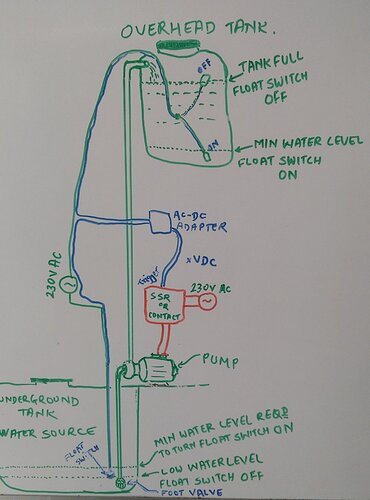Scenario1: Overhead water tank overflows, because the pump is still pumping water into it.
Scenario2: The water pump gets damaged because it’s trying to pump water, but there’s no water at (above) the footvalve.
Scenario3: You forgot to pump the water up in time, so the overhead water tank is empty. Now your taps in house are dry.
Scenario4: You have to make periodical visits to check the underground tank/sump for presence of adequate level of water.
All of the above are a result of a boring task - manually turning the pump ON and keeping a watch. Keep checking for adequate water level in the underground tank. When the water level in the underground tank drops below a certain level OR when the overhead tank begins to overflow, turn the pump OFF. Missing any of these is sure to lead to an undesired outcome.
To address the above scenarios, one would need to have a personal involvement into the whole management of water pumping. It’s an unnecessary toll on your precious time. It also may mean a financial overhead, if you employ someone for this task (as in many housing societies). Manual involvement in such boring task is almost a guarantee on making mistakes.
Automating this job is economical way and it’s less prone to errors. Addition of just a few electrical components can address all of the aforementioned drawbacks.
Assumptions:
1. The water pump works on Single Phase 230V AC @50Hz.
2. The total length of wire required is within feasible limits. (What’s feasible depends on various factors)
3. You consider this design only as a reference and a starting point of your design, and you make all the necessary tweaks to suit your particular situation.
4. You do not implement this solution ‘as is’, but, consult the expert(s).
5. You are well aware of the hazards intrinsic with working on AC mains power.
6. You strictly abide by local rules and regulations with respect to all the implicit and explicit factors related to this approach.
The purpose of this post is to provide a starting point for a more detailed discussion in improving the design. Here’s a proposed theoretical design to automate water pumping job.
Components:
